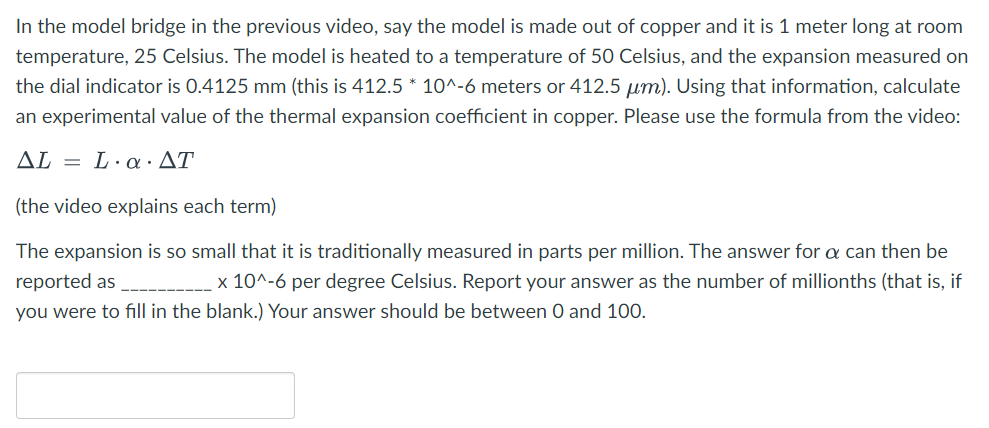In the model bridge in the previous video, say the model is made out of copper and it is 1 meter long at room temperature, 25 Celsius. The model is heated to a temperature of 50 Celsius, and the expansion measured on the dial indicator is 0.4125 mm (this is 412.5*10^-6 meters or 412.5 μm). Using that information, calculate an experimental value of the thermal expansion coefficient in copper. Please use the formula from the video: AL = L.a.AT (the video explains each term) The expansion is so small that it is traditionally measured in parts per million. The answer for a can then be reported as x 10^-6 per degree Celsius. Report your answer as the number of millionths (that is, if you were to fill in the blank.) Your answer should be between 0 and 100.
Energy transfer
The flow of energy from one region to another region is referred to as energy transfer. Since energy is quantitative; it must be transferred to a body or a material to work or to heat the system.
Molar Specific Heat
Heat capacity is the amount of heat energy absorbed or released by a chemical substance per the change in temperature of that substance. The change in heat is also called enthalpy. The SI unit of heat capacity is Joules per Kelvin, which is (J K-1)
Thermal Properties of Matter
Thermal energy is described as one of the form of heat energy which flows from one body of higher temperature to the other with the lower temperature when these two bodies are placed in contact to each other. Heat is described as the form of energy which is transferred between the two systems or in between the systems and their surrounding by the virtue of difference in temperature. Calorimetry is that branch of science which helps in measuring the changes which are taking place in the heat energy of a given body.

Trending now
This is a popular solution!
Step by step
Solved in 2 steps









